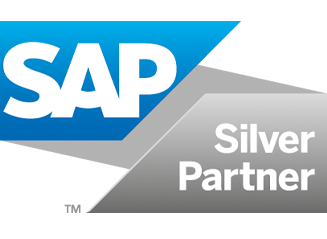South Korea took its first steps towards an e-Tax invoice system in 2009 by creating its e-Tax invoice system website and identifying system standardization. The following year the pilot phase started. The government and responsible tax authority, the National Tax Services (NTS), mandated that the use of these systems would become compulsory in 2014 for a large number of taxpayers. The E-invoicing model in South Korea is commonly known as the Continuous Transaction Control (CTC) model, which is a real-time or near real-time process.
Scope of the e-Invoicing System
The e-Invoicing requirement in South Korea applies to both legal businesses and individuals. B2B (business-to-business) and B2G (business-to-government) transactions have been under obligation since 2011.
Timeline of Implementation
The South Korean tax administration has adopted a phased approach for the implementation of e-invoicing systems according to the businesses’ turnover. The timeline has been as follows:
- 2011: Corporate taxpayers
- 2012: Individual taxpayers (1 billion KRW or more)
- 2014: Individual taxpayers (3 billion KRW or more)
- 2019: Individual taxpayers (3 billion KRW or more, including tax exempt items)
The threshold has been gradually reduced:
- From July 2022 the threshold was reduced from KRW 300 million to KRW 200 million.
- With the upcoming change taxpayers whose turnover is more than KRW 100,000,000 (about USD 83,000) must issue and submit e-Invoices from July 2023.
Technical details of the e-Tax Invoice System
E-Tax invoices must be generated in XML format and stored for 5 years. It is essential that all responsible businesses obtain a digital certificate before issuing a tax invoice.
Portal and Submission Process
The e-Tax invoice platform e-Sero was introduced in 2009, after which all tax functions were integrated into Hometax in 2015. Taxpayers in South Korea have a choice between various methods for their e-Invoicing process.
- Hometax
Taxpayers could use Hometax to issue their electronic invoices. Issued invoices this way will automatically be transmitted to the tax authority (NTS).
- ERP / ASP system
Taxpayers could also use ERP or ASP systems, but taxpayers will then need to report their invoices to the tax authority (NTS) by the next day after the invoice is issued. It should be noted that this option is mainly used by large-scale business for cost-savings.
The ASP system is a third-party service provider or outsourcing service.
The ERP system is a compay’s in-house system, which must be certified before being used to communicate with NTS.
- Telephone ARS system for non-internet users
This method is intended for smaller companies that don’t have access to the internet,.
- In person
It is usual but still possible to issue invoices in person.
Certification
As mentioned above, using an online eTax invoice system (with ASP, ERP, or Hometax), the supplier (invoice issuer) requires an authenticated digital certificate.
In South Korea, joint certificates (formerly public certificates) and financial certificates can be issued through a bank or certification authority. Certifications are required for tax reporting, e-notification, tax payment, certification issuance, tax invoice issuance, etc.
How can SNI help you?
SNI’s offers an end-to-end solution for compliance with the requirements provided by the Tax Authority in South Korea. The solution performs data retrieval from our clients’ ERP systems, data mapping and processing. Taxpayers in South Korea must collaborate with an approved intermediary, such as an accredited service provider (ASP) to sign and transmit data to the tax authority.
With this solution, end users can easily create e-invoices and monitor the XML and human readable HTML/PDF format and collect them in the user-friendly cockpit.
SNI’s solution provides complete support for both outbound and inbound invoices. Outbound invoices are transmitted to the tax authorities through official APIs or web services. Similarly, for inbound invoices (issued by suppliers to clients), solution automatically retrieves data at regular intervals using the appropriate APIs or web services provided by the tax authorities.
All inbound invoices are displayed on SNI’s Inbound Cockpit, a dedicated interface designed to enhance the user experience and allow efficient management. Each invoice is available in both XML and (human-readable) HTML/PDF formats, ensuring detailed insight and compliance with regulatory requirements.
SNI’s invoice reconciliation feature offers seamless validation of incoming invoices by automatically matching them with purchase orders, delivery notes, or other internal records. This feature simplifies the validation of incoming invoices, reduces manual effort, and minimizes errors thus offering a quick resolution. With enhanced accuracy and efficiency, businesses can gain better control over their financial workflows and ensure smooth operations.
SNI solution integrates with clients’ systems without the need for updates to existing system versions and is independent of SAP versions. SNI’s SAP solution is compatible with SAP ECC 4.7 and above, as well as SAP Business Technology Platform (BTP), SAP R3 and SAP S/4HANA. In addition, SNI provides ERP-independent solutions designed to integrate with any ERP system clients may use.


